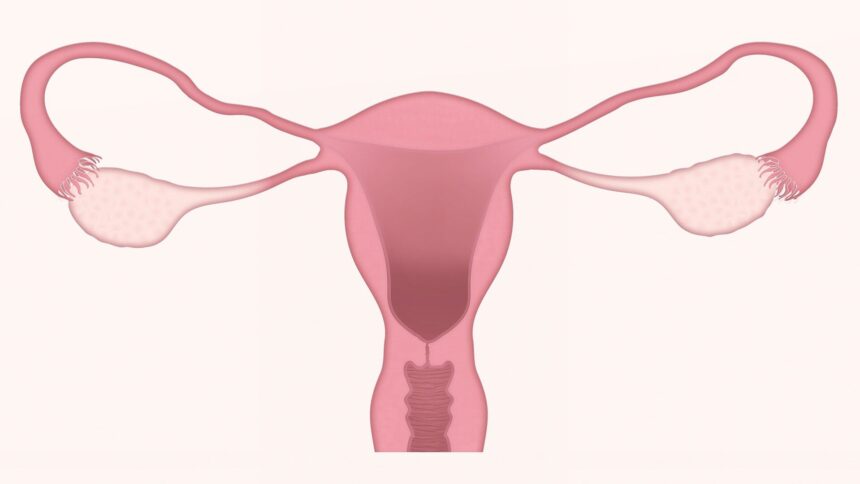Minor Cycle Shifts Linked to Influenza Vaccines
An international research team led by Oregon Health & Science University discovered a temporary increase in menstrual cycle length of less than one day associated with receiving the influenza vaccine, either alone or alongside a COVID-19 vaccine. The effect was linked to vaccines administered during the follicular phase.
Menstrual health outcomes have historically been excluded from vaccine trials, leaving a critical gap in understanding how vaccines might affect menstrual cycles. Side effects related to vaccines have indirectly been studied in the context of menstruation, as inflammation is both a common vaccine side effect and a core mechanism of tissue remodeling in the uterus.
Interest in vaccine-related menstrual disturbances rose during COVID-19 immunization efforts. While not part of a controlled study, the large-scale vaccination effort was a rare occurrence in which a medical intervention took place everywhere at once, offering a shared experience of real and imagined side effects.
Anecdotal reports unsupported by data have contributed to severe public mistrust. The World Health Organization has named vaccine hesitancy one of the top threats to global health. Yet beyond the mistrust, the misinformation, and the hesitancy, there are highly relevant observations deserving of further investigation.
In the study, "Menstrual Cycle Length Changes Following Vaccination Against Influenza Alone or With COVID-19," published in JAMA Network Open, researchers conducted a global retrospective cohort study to assess whether influenza vaccination, alone or with concurrent COVID-19 vaccination, is associated with changes in menstrual cycle length.
The cohort included 1,501 individuals aged 18 to 45 who used a digital birth control application, had average cycle lengths between 24 and 38 days across three consecutive cycles prior to vaccination, and were not using hormonal contraception. A total of 791 received the influenza vaccine alone and 710 received both influenza and COVID-19 vaccines on the same day.
Each individual served as their own control, with the primary outcome being the within-person change in menstrual cycle length from the mean of three pre-vaccination cycles to the vaccination cycle.
Cycle length changes were modeled using linear regression, adjusting for age, body mass index category, and parity. Multiple imputation by chained equations was used to address missing demographic data. A clinically meaningful change in cycle length was defined as an increase of eight days or more. Menstrual phase at time of vaccination (follicular or luteal) was assessed using an algorithm-derived estimate from the digital application and analyzed in subgroup comparisons.
Individuals vaccinated for influenza alone experienced an adjusted mean increase in cycle length of 0.40 days (95% CI, 0.08–0.72). Those who received both influenza and COVID-19 vaccines on the same day experienced an adjusted mean increase of 0.49 days (95% CI, 0.16–0.83). No statistically significant difference was found between the two vaccination groups (P = 0.69).
In the cycle following vaccination, both groups returned to their pre-vaccination cycle lengths. Adjusted mean change was −0.02 days (95% CI, −0.31–0.27) for individuals who received the influenza vaccine alone and 0.14 days (95% CI, −0.17–0.45) for those who received both vaccines (P = .46).
A clinically meaningful change in cycle length, defined as eight days or more, was observed in 4.7% of individuals who received only the influenza vaccine and 5.9% who received both vaccines (P = 0.28).
Among those who experienced this degree of change during the vaccination cycle, 27.8% in the influenza-only group and 20.5% in the dual-vaccine group continued to show such changes in the cycle that followed (P = 0.46).
P values reflect the probability that observed differences between groups could have occurred by chance. Values above 0.05 are not considered statistically significant. Reported P values such as 0.69, 0.46, and 0.28 suggest no meaningful difference in menstrual cycle changes between individuals who received only the influenza vaccine and those who received both influenza and COVID-19 vaccines.
Significant cycle length increases were observed, limited to individuals vaccinated during the follicular phase. Those vaccinated in the follicular phase experienced adjusted mean increases of 0.82 days (95% CI, 0.40–1.24) with the influenza vaccine alone and 0.99 days (95% CI, 0.55–1.43) with both vaccines. No change occurred for those vaccinated in the luteal phase.
Receipt of influenza vaccine alone or in combination with a COVID-19 vaccine was associated with small, temporary changes in menstrual cycle length. Findings confirm that concurrent administration of both vaccines does not appear to significantly increase the risk of menstrual disturbances.
Observed changes were most evident in individuals vaccinated during the follicular phase, consistent with prior work identifying menstrual cycle sensitivity to immune activation during this phase. No group showed sustained cycle length change in the cycle following vaccination.
Public concern about vaccine-related effects on fertility and menstrual health now has evidence that such changes are minor and temporary. Information about timing within the cycle will allow clinicians and individuals to better anticipate potential effects, and luteal-phase vaccination may reduce perceivable cycle changes entirely.
More Information
Emily R. Boniface et al., Menstrual Cycle Length Changes Following Vaccination Against Influenza Alone or With COVID-19, JAMA Network Open (2025). DOI: 10.1001/jamanetworkopen.2025.7871
Citation
Menstrual phase and vaccine timing linked to minor cycle shifts (2025, May 1). Retrieved 4 May 2025 from https://medicalxpress.com/news/2025-05-menstrual-phase-vaccine-linked-minor.html
Reference : https://medicalxpress.com/news/2025-05-menstrual-phase-vaccine-linked-minor.html








